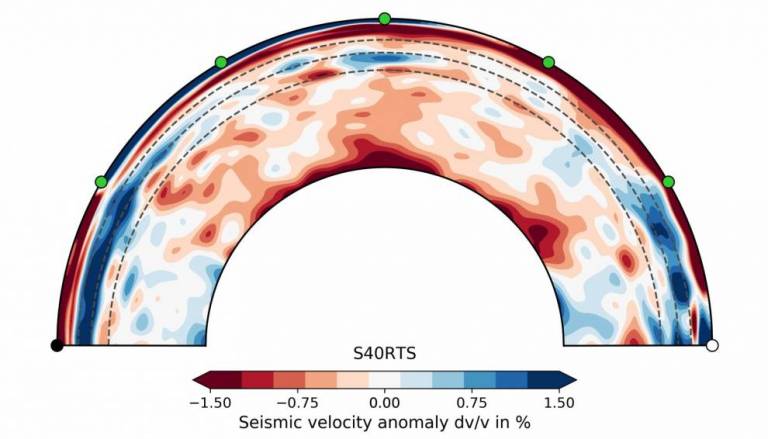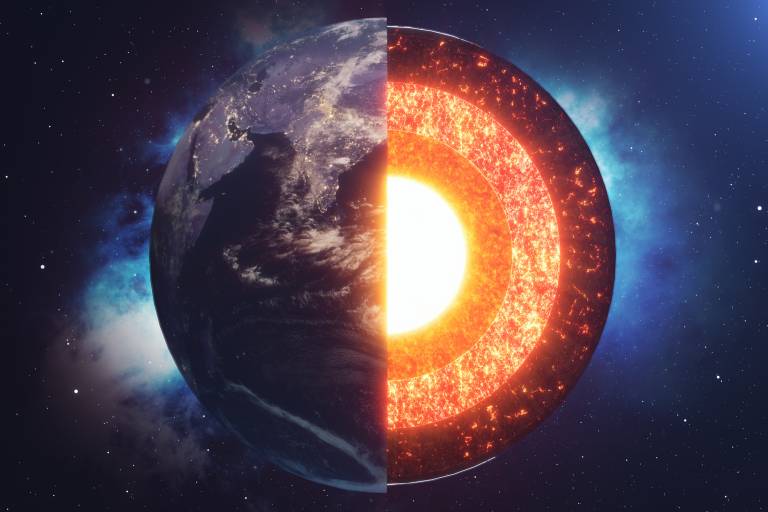High-pressure experiments complete picture of the Earth’s mantle
27 August 2019
The origin of continent-sized regions 3000km beneath the Earth, known as large low-velocity provinces (LLVPs) has been a mystery. Now, a team led by UCL scientists have shown that they may consist of parts of the surface crust, which have sunk to near the centre of the Earth.

Most of the Earth’s crust is made from a rock called basalt. Where two plates meet due to sea-floor spreading, the high density of basalt causes it to sink – or subduct – into the Earth’s interior. As these rocks travel deeper into the Earth they are exposed to higher pressures and temperatures and undergo various reactions. One result of these reactions is the production of calcium silicate perovskite (Ca-Pv), which is believed to be the third most abundant mineral at depths beyond 660 km.
The knowledge of the Earth’s mantle has, until now, been limited due to the difficulties of studying Ca-Pv. “It is technically challenging because this mineral is unrecoverable to ambient conditions, so in order to study any of its properties you must work at the conditions of the Earth’s interior where it is stable", explains Andrew Thomson, NERC Senior Research Fellow in the Department of Earth Sciences at UCL. This means pressures of over 100,000 atmospheres and temperatures above 1,000 °C. To make these measurements an international team of researchers performed experiments in the Large Volume Press at the European Synchrotron (ESRF), an instrument that is dedicated to the determination of physical characteristics of materials under high pressure and temperature conditions.
Taking Measurements
“The Large Volume Press at the ESRF is currently unique in Europe, where we can collect diffraction data in real time at pressure and temperature conditions relevant to the Earth’s interior”, says Wilson Crichton, the scientist in charge of the instrument. As well as collecting X-ray images and measuring Ca-Pv’s crystal structure, the team also measured the time taken for ultrasonic waves to travel through the samples at different pressure–temperature combinations. These allowed them to determine the structures, densities, sound-wave velocities and elastic properties of Ca-Pv at conditions similar to those of the Earth’s interior. Interestingly, the properties of Ca-Pv are not what was expected.
“Our results suggest subducted oceanic crust will be visible as low velocity anomalies throughout the lower mantle. In particular, we have shown that large low-velocity provinces (LLVPs), which are continent-sized regions of anomalously low velocity seen at over 2500 km depth beneath Earth’s surface, can be explained as areas with moderate enrichment of recycled oceanic crust” explains Professor John Brodholt, Professor of Mineral Physics at UCL.

 Close
Close

